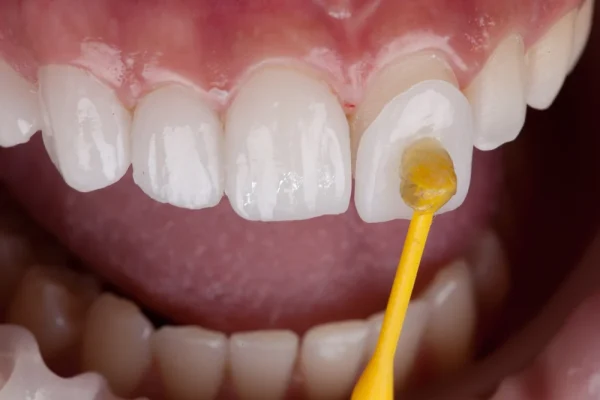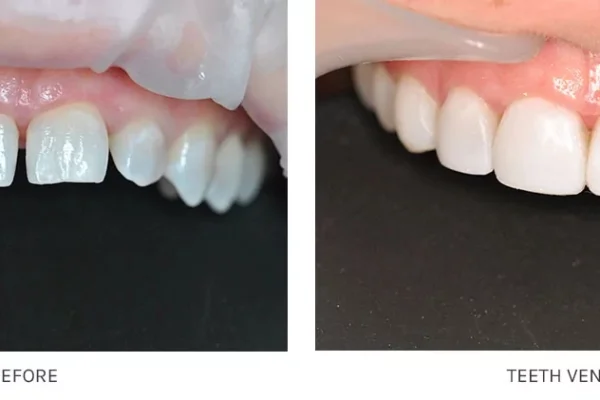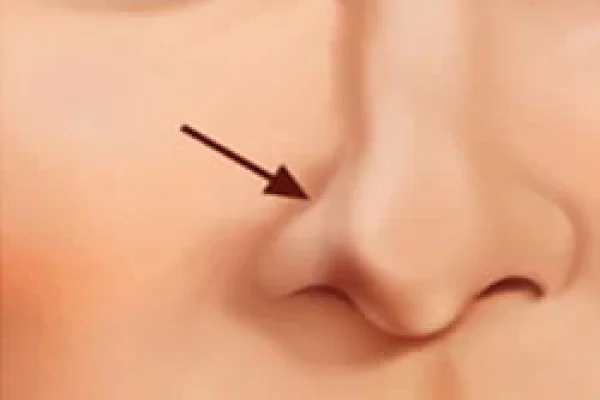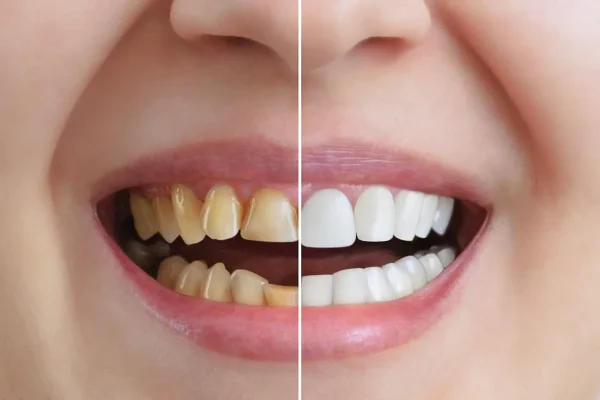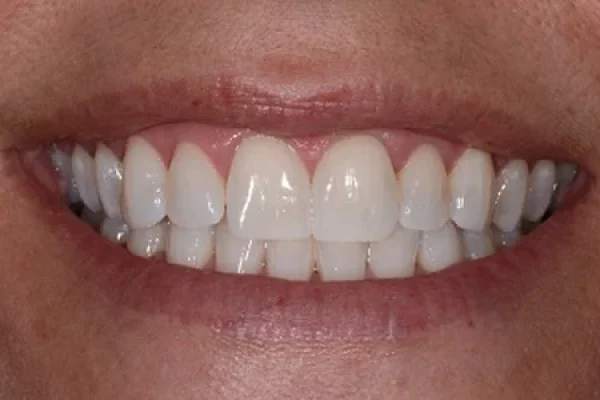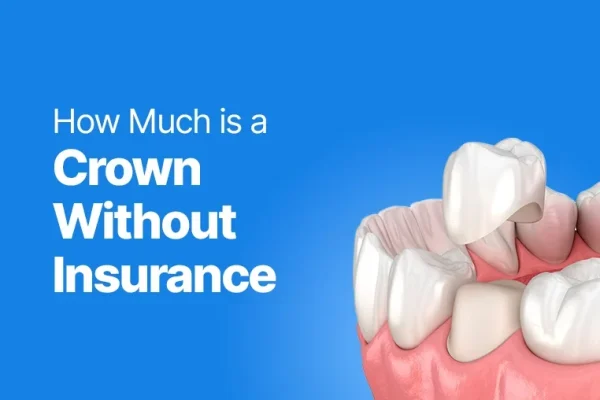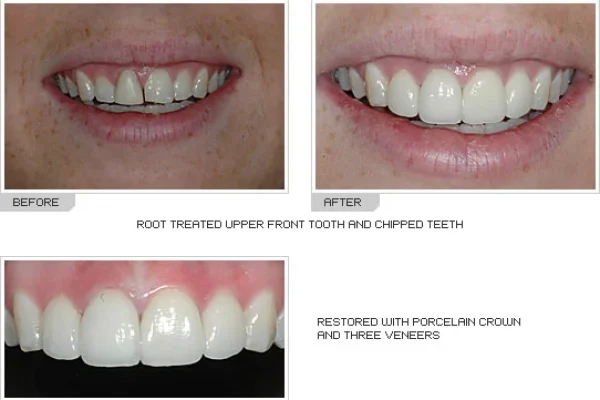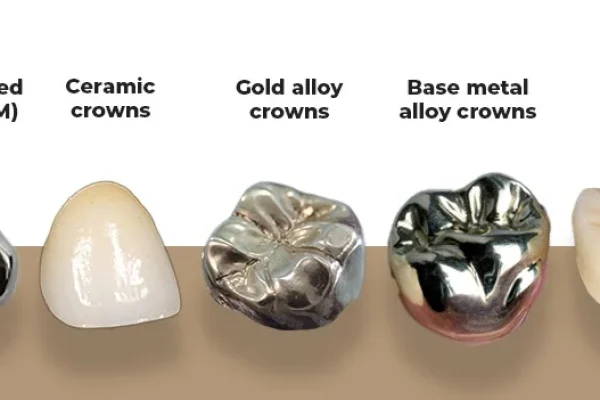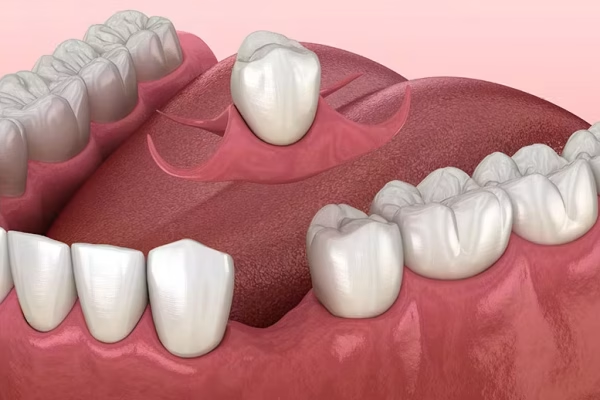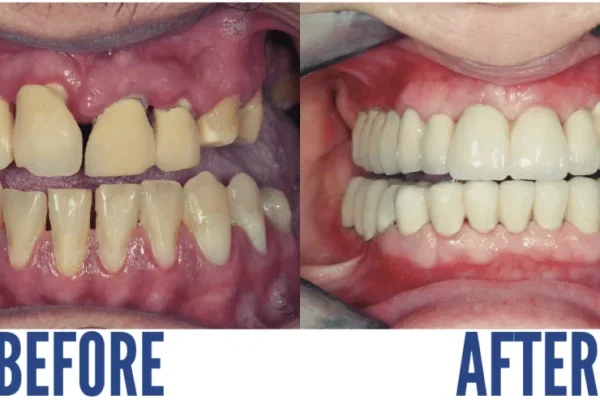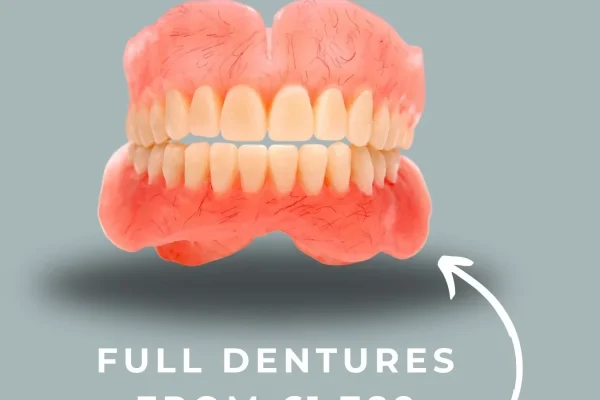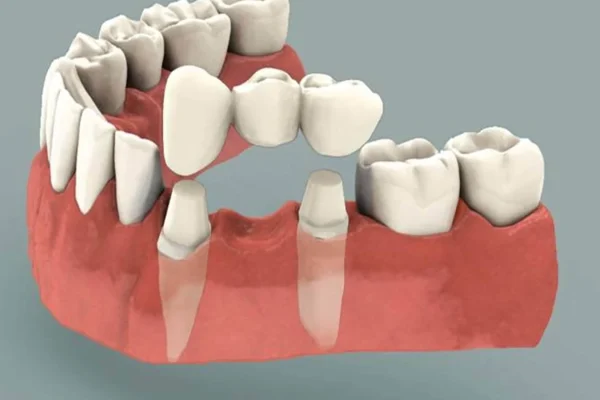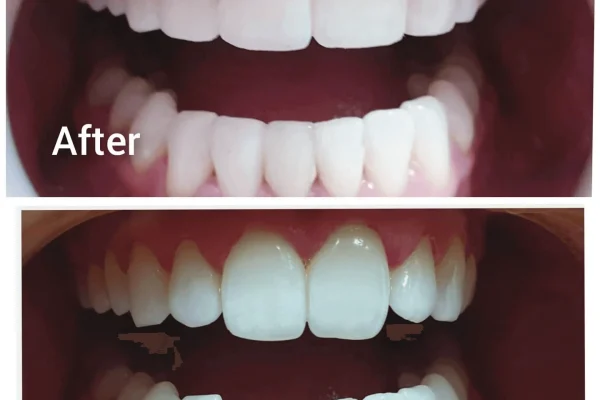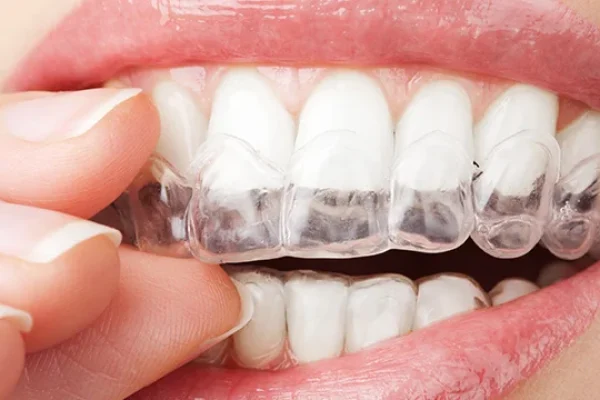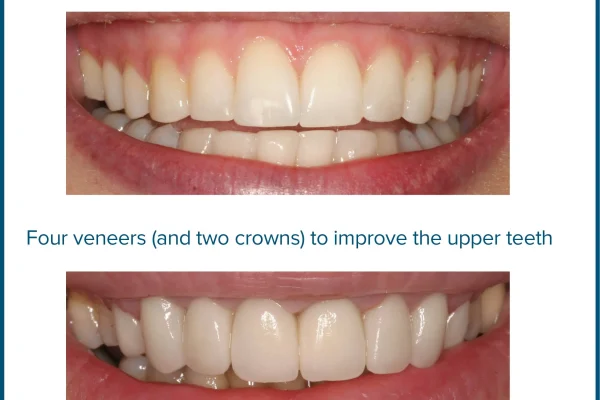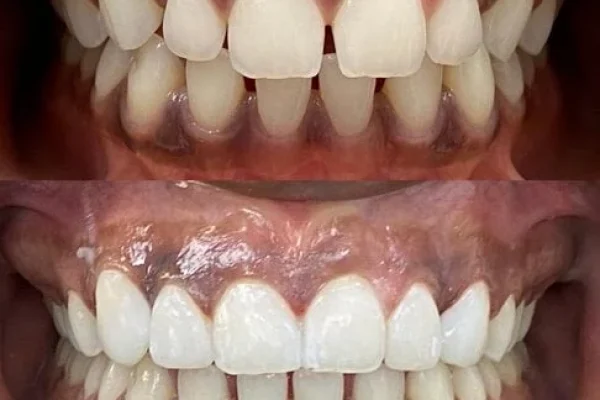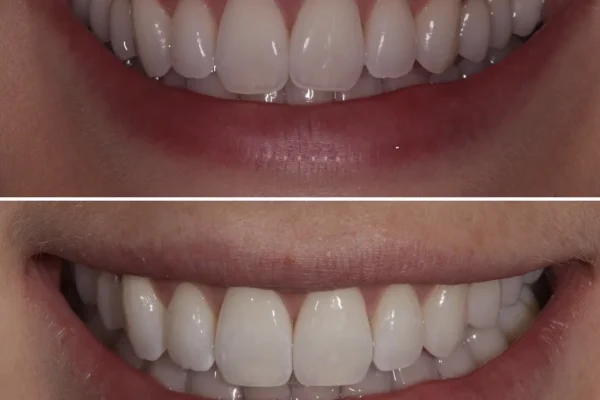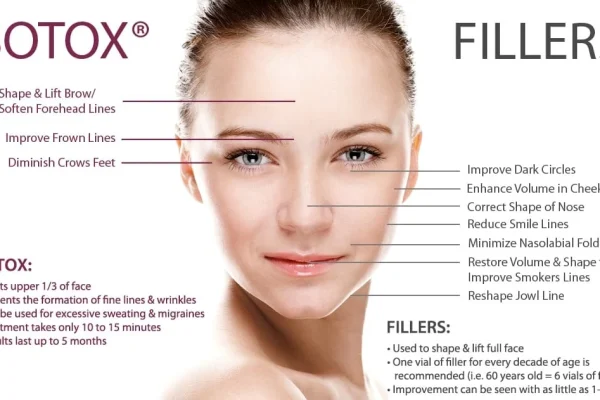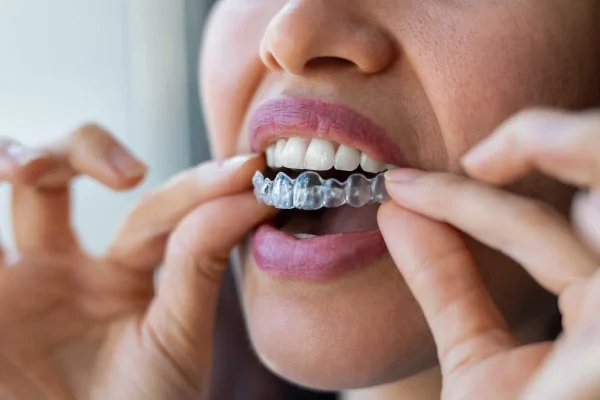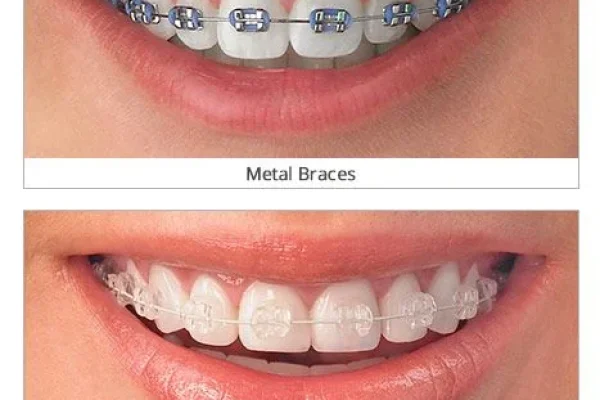
Table of Contents
ToggleKey Takeaways
- Replacing missing teeth involves modern, sophisticated solutions beyond traditional dentures.
- Terminology varies; “false tooth” is a broad term covering dentures, bridges, and implant-supported crowns.
- Options include **removable dentures** (full/partial) and **fixed solutions** (bridges/implants).
- Cost is highly variable, depending on the type chosen, materials, complexity, and location. **Implants** are generally the most expensive but most durable.
- Lifespan depends on the type of prosthetic and how well it is cared for.
- Modern false teeth can look incredibly **natural** and significantly improve function and confidence.
- Proper care and regular dental check-ups are crucial for longevity and oral health.
Right then, let’s sink our teeth into this. The world of replacing missing pearly whites has moved lightyears beyond Grandma’s clunky chompers. We’re talking about sophisticated, life-changing solutions. Consider this your deep dive, crafted with SPARKLE’s signature blend of sharp insight and smooth delivery. We’ll navigate the terrain of ‘false teeth’ – a term often thrown around casually, yet one that encompasses a remarkable spectrum of modern dental marvels. Get ready to unlock everything you need to know, from the fundamental concept to the nitty-gritty of cost, care, and just how natural they can truly look. This isn’t just about filling a gap; it’s about restoring function, boosting confidence, and rediscovering the simple joy of a full, vibrant smile. Let’s go.
What is a false tooth, and what are they called?
Losing a tooth can feel like losing a piece of yourself. It impacts not just your smile, but your ability to chew, speak, and, let’s be honest, your overall confidence. When a natural tooth is gone, whether due to decay, injury, or disease, the space it leaves behind isn’t just an aesthetic issue; it’s a functional one. The surrounding teeth can begin to shift, bone structure in the jaw can start to recede over time without the stimulation of a tooth root, and your bite alignment can be compromised. This is where the concept of a “false tooth” comes into play – a necessary and ingenious invention designed to step into the void left by a missing natural tooth, restoring form and function to your mouth. The term “false tooth” is a bit of a catch-all, a common colloquialism for any dental prosthetic used to replace missing teeth. While people often use it generically, the dental world employs more precise terminology depending on the specific type of replacement being used. Think of it like calling all cars “vehicles”; accurate, but lacking the detail to describe a sports car versus a pickup truck. You’ll hear terms like **dental plates**, **false dentures**, or **fake teeth dentures** used, often interchangeably by the public, though dentists use these terms more specifically. Dentures, in particular, represent a significant category within this broader umbrella of false teeth solutions, often being the first thing that comes to mind for many people when they think about artificial teeth. Understanding these terms is the first step in navigating the landscape of tooth replacement options available today, acknowledging that modern solutions offer a far cry from the historical, rudimentary ‘false teeth’ you might imagine. These are sophisticated, custom-made medical devices designed to integrate with your unique oral anatomy and meet your specific needs, aiming to bring your smile back to its full potential. They aren’t just replacements; they are restorations of health and well-being.
What are dentures?
At their core, dentures are removable prosthetic devices constructed to replace missing teeth and the surrounding tissues. They are essentially custom-made plates or frameworks that hold artificial teeth, designed to fit snugly over the gums and bone ridge where teeth once were. There are two main types: **full dentures**, which replace all the teeth in either the upper or lower jaw (or both), and **partial dentures**, which are used when some natural teeth remain and they fill the gaps created by missing teeth. Dentures provide support for facial muscles, restore chewing ability, improve speech, and, crucially, bring back the appearance of a complete set of teeth. They are often referred to simply as **dental plates** or **denture plates**, reflecting the base structure that holds the artificial teeth.
What is a false tooth called?
While “false tooth” is a common descriptor, a single replacement tooth can be referred to by several names depending on the specific dental restoration used. If it’s replacing one tooth among others and is removable, it might be a component of a **partial denture**. If it’s fixed in place by being anchored to adjacent natural teeth, it’s part of a **dental bridge**. If it’s a standalone tooth attached to a surgically placed titanium post in the jawbone, it’s called an **implant-supported crown**. So, while “false tooth” works casually, dentists will use the term that accurately describes the type of prosthetic involved.
What are the different types of false teeth options?
Stepping into the world of tooth replacement can feel overwhelming at first glance, with a dizzying array of options promising to restore your smile. But fear not, because modern dentistry offers a tailored approach, meaning there’s likely a solution perfectly suited to your unique situation. The journey begins with understanding that tooth replacement isn’t a one-size-fits-all proposition; it’s a carefully considered decision based on several factors, including the number of teeth missing, their location in your mouth, the health of your remaining natural teeth and jawbone, your overall health, your budget, and your personal preferences regarding permanence and convenience. The spectrum of **false teeth options** essentially breaks down into two main categories: removable solutions, like the traditional dentures we just discussed, and fixed solutions, which are anchored more securely in the mouth and are not intended for daily removal by the patient. Exploring these categories reveals the diverse tools available to dentists today. We have solutions ranging from those that are relatively quick and less invasive to those that require surgical intervention but offer potentially greater stability and longevity. The innovation in materials and techniques means that today’s **fake teeth options** are more comfortable, functional, and aesthetically pleasing than ever before, capable of restoring everything from a single missing molar at the back (**molar dentures**, **back teeth dentures**) to a prominent front tooth. It’s a journey of evaluation and discussion with your dental professional to determine which path aligns best with your needs and goals, ensuring you find the optimal way to achieve effective **tooth replacement**. Each option comes with its own set of considerations regarding procedure, maintenance, feel, and cost, making that initial consultation a crucial step in navigating this landscape. The goal is always to find a solution that doesn’t just fill a space, but genuinely improves your quality of life.
What are partial dentures?
**Partial dentures**, sometimes referred to simply as a **denture partial**, are a popular removable option for individuals who have lost some teeth but still retain some natural ones. They consist of replacement teeth attached to a gum-coloured base, which is typically made of acrylic or a flexible plastic. This base often has a framework, traditionally made of cast metal (like cobalt-chromium), that connects to your existing natural teeth with clasps or precision attachments, though modern materials like flexible nylon are also used (**dental plates for missing teeth**). Partial dentures fill the gaps, preventing remaining teeth from shifting into the empty spaces and helping to distribute chewing forces more evenly. They can be designed for either the upper or lower jaw (**upper partial denture**, **lower teeth partial dentures**) and are a viable option for replacing anything from a single front tooth (**front tooth partial denture**) to several teeth across the arch.
Can you get one false tooth?
Absolutely, replacing just one missing tooth is a very common scenario, and modern dentistry offers excellent solutions. You are not limited to a full or partial denture if only one tooth is absent. The question, “**Can you get one false tooth?**” or “**Can I get one fake tooth?**”, is frequently asked, and the answer is a resounding yes, often with multiple ways to achieve it. The primary options include: 1) A **single tooth denture** as part of a small partial denture, often temporary. 2) A dental bridge, which involves placing a crown on the teeth adjacent to the gap and suspending the false tooth (**pontic**) between them. 3) The gold standard for single tooth replacement, a single dental implant with a crown placed on top. The best choice depends on the health of your surrounding teeth, bone density, location of the missing tooth, and budget. “**Can you get a one-tooth denture?**” specifically refers to a small, often temporary, partial denture sometimes called a “flipper”, which replaces just one tooth. “**What does a 1 tooth denture look like?**” typically describes a false tooth attached to a small acrylic base that rests on the gum and might have a clasp or wing for retention, designed more for aesthetics than heavy chewing. Considerations like “**How does a single denture stay in?**” relate to the fit of the base on the gum and the presence of clasps or wings, while “**Is single tooth denture good?**” and “**Can you eat with a single tooth denture?**” highlight that these are often temporary or aesthetic solutions, less stable for chewing compared to bridges or implants. There are robust **options for replacing a single missing tooth**, each with its own pros and cons regarding stability, cost, and impact on adjacent teeth.
What are permanent fake teeth called?
When people ask about **permanent fake teeth**, they are generally referring to dental restorations that are fixed in the mouth and cannot be removed by the patient. The two main types are dental implants and fixed dental bridges. Dental implants are titanium posts that are surgically placed into the jawbone, serving as artificial tooth roots. Once the implant integrates with the bone, a custom-made crown (the visible false tooth) is attached to it. These are considered the most durable and long-lasting tooth replacement option, often lasting a lifetime with proper care, making them the closest thing to a “permanent” tooth replacement. Fixed dental bridges, as mentioned, consist of one or more false teeth (pontics) held in place by dental crowns cemented onto the natural teeth or implants adjacent to the gap. While durable and non-removable by the patient, the lifespan of a bridge is typically 5-15 years before potentially needing replacement, depending on care and the health of the supporting teeth. Both offer stability and function superior to removable dentures, but implants are generally considered the more permanent solution due to their direct integration with the bone.
What are false teeth made of?
The materials used to craft false teeth have advanced significantly, balancing durability, aesthetics, and function. The base of **dentures** (full or partial) is most commonly made from **acrylic resin**, which is coloured to mimic gum tissue. The artificial teeth themselves are usually made from either **acrylic resin** or **porcelain**. Acrylic teeth are more common due to their lower cost and ease of adjustment, while porcelain teeth are harder and more stain-resistant but can wear down opposing natural teeth. For the frameworks in **partial dentures**, rigid metal alloys like **cobalt-chromium** are traditional, offering strength and a slim profile, though flexible plastics are increasingly popular for certain applications. **Crowns** used in bridges and on implants, the visible ‘false tooth’ part, are crafted from various materials including **porcelain**, **ceramic** (like zirconia, known for strength and aesthetics), metal alloys (like gold or base metals), or a combination (porcelain fused to metal). The choice of material impacts the restoration’s appearance, strength, cost, and longevity, tailored by the dental professional to the specific needs and location of the false tooth.
How much does a false tooth cost?
Ah, the age-old question: “How much does it cost?” When it comes to dental work, and particularly replacing missing teeth, the answer is rarely a simple number on a price tag. The cost of a **false tooth** or a set of **false teeth** is incredibly variable, influenced by a constellation of factors. Think of it less like buying a loaf of bread and more like commissioning a custom-built piece of fine furniture – the materials, the complexity of the design, the skill of the craftsperson (your dentist and the lab technicians), and even the location of the workshop (where you live) all play significant roles. The specific type of replacement you choose is the biggest determinant. A full set of traditional, removable dentures will have a vastly different price point than a single dental implant and crown, or a complex partial denture. Materials matter too; porcelain teeth might cost more than acrylic, and the type of framework in a partial denture (metal vs. flexible vs. acrylic-only) impacts the price. Geographic location is a known variable in dental pricing – costs can differ significantly between different cities or countries (**What is the cost of dentures in India?** is a query with a very different answer than the UK or US). Furthermore, the individual dentist’s fees, the need for any preliminary work (like extractions, bone grafting, or treating gum disease), and whether you have dental insurance or access to financing options all factor into the final figure. It’s a significant investment in your oral health, function, and appearance, and getting a precise estimate requires a thorough consultation with a dental professional who can assess your specific needs and outline a treatment plan tailored to you. General price ranges can be discussed as starting points, but the exact cost is something that must be determined on a case-by-case basis after a clinical examination and discussion of the chosen solution.
How much does it cost to get one fake tooth?
Focusing specifically on replacing a single missing tooth, the costs can vary widely depending on the method chosen. If the replacement is part of a small, often temporary **single tooth denture** (like a flipper), the cost is generally the lowest upfront, potentially ranging from a few hundred to maybe a thousand dollars, but these are typically not intended as long-term solutions. A single-unit **dental bridge** replacing one tooth will be significantly more, as it involves crowns on two adjacent teeth plus the false tooth in between. Costs for a bridge can range from $2,000 to $5,000 or more, depending on materials and complexity. The most significant investment for a single tooth replacement is typically a **single dental implant** with its attached crown. While the implant itself can cost from $1,000 to $3,000 or more, the abutment and crown add substantial cost, bringing the total for a single implant and crown system potentially into the $3,000 to $6,000+ range. https://dentale-albania.com/en/dental-implants-uk-cost “**How much would one false tooth cost?**” is best answered by identifying which specific type of single tooth replacement is being considered. These estimates often do not include initial consultation fees, necessary X-rays, or potential pre-procedures like tooth extraction or bone grafting, which can add to the overall expense. https://dentale-albania.com/cost-of-dental-implants-in-turkey
What is the cheapest option for missing teeth?
Generally speaking, the most affordable upfront solution for replacing multiple missing teeth is a traditional **removable denture**, whether it’s a **partial denture** or a **full denture**. The cost of a complete set of upper and lower dentures can range significantly but is typically less per tooth than fixed options like bridges or implants when replacing a large number of teeth. Partial dentures for fewer missing teeth are also generally less expensive than bridges or implants in the same locations. This affordability comes primarily from the materials used (mostly acrylic) and the less complex clinical procedure (no surgery needed for traditional dentures, and adjacent teeth don’t need to be prepped as they do for bridges). However, it’s crucial to consider that while cheaper initially, dentures may incur ongoing costs over time, such as for adhesives, cleaning supplies, and periodic relining or eventual replacement (often every 5-10 years) as the underlying jawbone changes shape. So, while the initial outlay is lower, the long-term costs should also be factored into the equation when considering “**What is the cheapest option for missing teeth?**”
How long do false teeth last?
Predicting the exact lifespan of any dental prosthetic is a bit like predicting the weather years in advance – there are general patterns, but many variables can influence the actual outcome. The question of “**How long do false teeth last?**” depends fundamentally on the type of false teeth you have, the materials they are made from, how well you care for them, and crucially, how your mouth changes over time. The human mouth is a dynamic environment; gum tissue can recede, bone density can decrease (especially where teeth are missing), and the fit of a prosthetic will naturally be affected by these shifts. Just like a favourite pair of shoes, daily wear and tear also takes its toll. A delicate acrylic partial will wear differently than a robust implant-supported crown. Therefore, thinking about the longevity of **false teeth** requires considering these influencing factors rather than expecting a single, fixed expiry date for all types of replacements. Understanding the typical lifespan ranges for different solutions helps manage expectations and plan for potential future adjustments or replacements, ensuring your oral health remains a priority over the years. Regular check-ups with your dentist are key; they can monitor the condition of your false teeth and your oral health, providing maintenance and advice to help your restoration last as long as possible and function effectively throughout its service life. It’s an investment, and proper care and monitoring help protect that investment.
How long does a single false tooth last?
The lifespan of a single tooth replacement varies based on the specific method used. A **single tooth denture**, like a flipper, is often considered a temporary solution and may only be comfortable or functional for a few months to a couple of years before needing replacement or significant adjustment, especially if it’s worn consistently. A **single dental bridge** replacing one tooth typically has a lifespan ranging from 5 to 15 years. Its longevity depends heavily on the health and strength of the natural teeth supporting it (the abutments), as well as proper oral hygiene. Decay or gum disease affecting the supporting teeth can compromise the entire bridge. A **single dental implant** and the crown placed on it offer the most durable single-tooth replacement. The implant itself, being made of titanium integrated into the bone, can potentially last a lifetime if the surrounding gum and bone health are maintained. The visible crown attached to the implant, however, is subject to chewing forces and wear and tear and typically needs replacement after about 10-15 years, similar to a crown placed on a natural tooth, although it’s not uncommon for them to last longer with excellent care. So, when asking “**How long does a single false tooth last?**”, the answer depends significantly on whether it’s part of a removable partial, a bridge, or an implant system.
Are false teeth a good idea, and what are the drawbacks?
Deciding whether **false teeth** are the right path for you is a significant personal choice, and for many, it’s an unequivocally good one. When you’re missing teeth, particularly several, the impact on your life goes beyond just aesthetics. Chewing can become difficult or painful, limiting your diet and potentially affecting your nutrition. Speaking clearly can be a challenge, leading to social anxiety. The absence of teeth can cause your facial structure to change over time, leading to a sunken appearance. In this context, opting for **false teeth** or other tooth replacement solutions is often a **good idea** because they address these very real problems. They restore the ability to eat a wider variety of foods, improve speech, provide support for your lips and cheeks, and give you back the confidence to smile and interact socially without hesitation. For many, the improvement in quality of life is dramatic. However, it’s equally important to approach this decision with open eyes and understand that, like any medical solution, **false teeth** are not without their potential drawbacks or characteristics that require adjustment. The “good idea” assessment truly depends on your individual circumstances, health status, the specific type of false teeth chosen, and your willingness to adapt to them and commit to proper care. It’s a balance of benefits and compromises that needs to be discussed with a dental professional to ensure you make an informed decision that aligns with your expectations and lifestyle.
What are the disadvantages of false teeth?
While the benefits are substantial, there are potential drawbacks to consider, particularly concerning **removable dentures**. They can feel bulky and take time to get used to, affecting speech and eating initially. Some people find they need **denture adhesive** to keep them securely in place, which is an ongoing cost and routine. There’s also a potential for them to slip or click during speaking or eating, which can be embarrassing. **Food restrictions** may apply, as hard, sticky, or very chewy foods can dislodge or damage dentures. Importantly, traditional removable dentures do not stimulate the jawbone beneath them, meaning bone loss can continue over time, leading to changes in the fit of the denture and potentially altering facial structure. For **bridges**, the main drawback is that they require preparing (grinding down) the healthy adjacent teeth to support the crowns, which is an irreversible process. If one of the supporting teeth develops problems, the entire bridge can be compromised. **Implants**, while highly stable and bone-preserving, involve a surgical procedure, are the most expensive option upfront, and require adequate bone density and overall health for success. Each type of **false teeth** comes with its own set of trade-offs that must be weighed against the significant benefits of tooth replacement.
Who cannot wear dentures?
Not everyone is a suitable candidate for every type of **false teeth**. While **removable dentures** are widely applicable, individuals with a severe gag reflex may find them difficult or impossible to wear comfortably. Certain medical conditions or medications that affect saliva production or gum health can also impact the success and comfort of dentures. Lack of stable supporting structures (like sufficient bone ridge for full dentures or healthy anchor teeth/implants for partials) would also be a contraindication. For **dental implants** and **bridges**, more specific health requirements exist. Sufficient bone density is crucial for implants; if bone loss is too severe, bone grafting might be needed, or implants may not be possible. Certain chronic diseases like uncontrolled diabetes, autoimmune disorders, or conditions requiring medications that affect bone healing (like some bisphosphonates) can increase the risk of complications and may make implants or oral surgery unsuitable. Heavy smokers also have a significantly higher risk of implant failure and slower healing. A thorough medical history and dental examination are essential to determine the most appropriate and safest tooth replacement option for any individual.
How are false teeth used and cared for?
Integrating **false teeth** into your daily life involves learning new habits, particularly around usage and maintenance. This isn’t just about cleanliness; it’s about preserving the health of your mouth and ensuring your false teeth remain comfortable and functional for as long as possible. Adapting to wearing them for the first time requires patience. New dentures, for instance, might feel strange or bulky initially, and it takes time for your mouth to adjust. Speaking and eating will require practice. Proper care is non-negotiable. Just like natural teeth, false teeth can accumulate plaque and food particles, leading to bad breath, gum disease, and potential damage to the prosthetic or any remaining natural teeth. The required daily cleaning routines vary depending on the type of false teeth you have. Removable dentures need to be cleaned outside the mouth, while fixed restorations like bridges and implants require specific cleaning techniques to get around and under them. Understanding **what is needed for maintenance** is key to maximising the lifespan of your investment and maintaining optimal oral health. Ignoring care instructions can lead to discomfort, damage, and the need for early replacement, which is both costly and inconvenient.
Can you eat with dentures?
Yes, absolutely, the primary purpose of dentures is to restore your ability to eat. However, **eating with new dentures** definitely requires practice and adjustment. It won’t be the same as eating with natural teeth right away. Dentists typically recommend starting with soft foods cut into small pieces. Chewing slowly and using both sides of your mouth simultaneously helps to stabilise the dentures and distribute pressure evenly. As you get more comfortable, you can gradually introduce firmer foods. Some foods may remain challenging or should be avoided altogether, such as very hard candies, sticky caramel, nuts with shells, and tough meats, as they can dislodge or damage the dentures. Patience and persistence are key during this learning phase.
Can you sleep with dentures?
For most people, the standard recommendation is to **remove dentures while sleeping**. This allows the gum tissues underneath to rest and recover from the pressure of the dentures, which is essential for maintaining their health and preventing irritation and potential infection. Soaking dentures overnight in a cleaning solution also helps keep them clean and hydrated. However, in certain circumstances, a dentist might advise a patient to wear their dentures overnight, for example, to maintain the correct jaw relationship after certain procedures. But as a general rule, it’s beneficial for your oral health to give your gums a break.
Can you brush dentures with toothpaste?
This is a crucial point of care. You should generally **not use regular toothpaste** to brush your dentures. Most conventional toothpastes contain abrasive ingredients intended to polish natural tooth enamel. While great for enamel, these abrasives can create microscopic scratches on the softer surface of denture acrylic. These tiny scratches can then become breeding grounds for bacteria and stain particles, making the dentures harder to keep clean and potentially affecting their appearance and hygiene over time. Instead, use a soft-bristled brush specifically designed for dentures or a regular soft toothbrush, and clean them with plain water, mild hand soap, or a non-abrasive denture cleaner.
How should you maintain your fake teeth?
Comprehensive care for **fake teeth** involves more than just daily brushing. For **removable dentures**, this means brushing them daily (outside the mouth, over a bowl of water to catch them if dropped) using a soft brush and non-abrasive cleaner, rinsing them thoroughly, and soaking them overnight in a denture cleaning solution to keep them hydrated and kill bacteria. It also involves cleaning your gums, tongue, and any remaining natural teeth. Handle dentures carefully to avoid dropping them. For **bridges** and **implant-supported crowns**, meticulous oral hygiene around the restoration and adjacent teeth is essential. Special brushes, floss threaders, or interdental brushes may be needed to clean underneath bridges and around implants. Regardless of the type of false teeth, regular dental check-ups are vital. Your dentist can clean areas you might miss, check the fit and condition of your false teeth, and monitor your overall oral health, ensuring longevity and preventing problems.
What does getting false teeth involve?
Embarking on the process of getting **false teeth** can seem like a complex undertaking, but it’s a structured journey guided by dental professionals. The steps involved aren’t uniform; they differ considerably depending on whether you’re getting **removable dentures**, a **dental bridge**, or **dental implants**. However, the process typically begins with an initial consultation and thorough examination. This is where your dentist assesses your oral health, discusses your needs, preferences, and budget, and outlines the available treatment options. X-rays, impressions, and sometimes CT scans are taken to get a detailed picture of your mouth and bone structure. A treatment plan is then developed, explaining the proposed procedure, timeline, costs, and expected outcomes. If you opt for dentures, the process usually involves several appointments for impressions, bite registration, trying in a wax model of the dentures, and final fitting, with adjustments made as needed. Getting a bridge involves preparing the supporting teeth, taking impressions, placing a temporary bridge, and finally cementing the custom-made permanent bridge. The process for implants is the most involved, requiring surgical placement of the titanium post(s) into the jawbone, followed by a healing period (osseointegration) that can take several months, and then the attachment of the abutment and final crown. Throughout all these processes, communication with your dental team is key to address any concerns and ensure you feel comfortable and informed at each stage.
Do dentists do false teeth?
Yes, absolutely. **Dentists** are the primary professionals responsible for providing and fitting **false teeth** solutions. A **general dentist** can provide traditional removable dentures and may also perform procedures for bridges or work in conjunction with specialists for implants. **Prosthodontists** are dental specialists with advanced training in the restoration and replacement of teeth, making them experts in dentures, bridges, crowns, and implants. **Oral surgeons** often perform the surgical placement of dental implants, while **periodontists** (gum specialists) may also be involved in implant placement, especially if gum health is a concern. So, while the process might involve different types of dental professionals depending on the complexity and chosen solution, your journey to getting false teeth will begin and be managed by a qualified dental team.
How painful is getting false teeth?
The level of discomfort experienced when getting **false teeth** varies significantly depending on the type of restoration. For **removable dentures**, the fabrication process itself is not painful; it involves taking impressions and measurements. However, once you receive new dentures, there is an adjustment period where you might experience some soreness, irritation, or pressure spots as your mouth gets used to the new appliance. These issues are typically managed with adjustments by your dentist and over-the-counter pain relievers if needed. Getting a **dental bridge** involves preparing the adjacent teeth, which is done under local anaesthesia, so you shouldn’t feel pain during the procedure, though some sensitivity or mild soreness in the prepared teeth after the anaesthesia wears off is common. **Dental implant** placement is a surgical procedure and is performed under local anaesthesia, sedation, or even general anaesthesia depending on the complexity and patient preference. You will not feel pain during the surgery, but some post-operative discomfort, swelling, and bruising are expected. This is usually managed with prescribed pain medication and following post-operative care instructions. So, while some procedures involve pain management and recovery, the fabrication of false teeth itself is typically not painful, and post-procedure discomfort is manageable.
Can false teeth look natural?
Forget the images of ill-fitting, uniform rows of glaring white teeth from the past. The answer to the question, “**Can false teeth look natural?**”, in the era of advanced dental technology and materials, is a resounding yes. Modern **false teeth**, whether they are part of a denture, a bridge, or an implant-supported crown, can be crafted with remarkable artistry to blend seamlessly with your remaining natural teeth and facial features. Dentists and skilled dental lab technicians work together to customise the false teeth. They consider factors like the patient’s age, gender, skin tone, eye colour, and the shape of their face to select the appropriate tooth shade, size, and shape. The gum-coloured base of dentures can also be matched to the patient’s natural gum tissue. High-quality materials like multi-layered acrylics, porcelains, and advanced ceramics mimic the translucency and subtle variations of natural tooth enamel. Furthermore, the way the false teeth are arranged and set into the prosthetic is crucial; careful attention is paid to creating a natural-looking alignment and bite. While achieving a truly natural appearance depends on the skill of the dental professional and the quality of the materials used, it is absolutely possible for **false teeth** to look incredibly realistic, restoring not just function, but a genuinely authentic and confidence-boosting smile. The goal is often for the false teeth to be virtually indistinguishable from natural ones to the casual observer.
Frequently Asked Questions About false tooth
Navigating the options and implications of replacing missing teeth naturally leads to a host of common questions. People want to understand what these solutions are, how they work, what they cost, how long they might last, and what daily life is like with them. These recurring queries highlight the key areas of concern and curiosity for anyone considering tooth replacement. While we’ve delved into these topics throughout this guide, consolidating the most frequent questions provides a quick reference point, offering concise answers to get you started. However, it’s vital to remember that while these provide general information, your specific situation is unique. Factors like your overall health, the condition of your remaining teeth and gums, the amount of bone present, and your lifestyle all play a significant role in determining the best course of action for you. Therefore, these answers should serve as a helpful introduction and a catalyst for further discussion with a qualified dental professional who can provide personalised advice and recommendations based on a thorough examination of your individual oral health needs. Approaching tooth replacement as a collaborative process with your dentist ensures you select the most appropriate solution for your specific circumstances and receive the care needed for the best possible outcome, helping you achieve a healthy, functional, and aesthetically pleasing smile.
What are false teeth?
False teeth are prosthetic devices used to replace missing natural teeth. They can range from single tooth replacements to full sets designed for the entire upper or lower jaw.
What is a false tooth called?
The term “false tooth” is general. More specific terms include denture tooth (part of a removable denture), pontic (part of a dental bridge), or a crown attached to a dental implant.
Can you get one false tooth?
Yes, you can absolutely get one false tooth. Options include a small partial denture, a dental bridge anchored to adjacent teeth, or a single dental implant with a crown.
How much does a false tooth cost?
The cost varies significantly depending on the type (denture tooth, bridge, implant crown), materials, complexity, location, and the dentist’s fees. Single tooth replacements can range from a few hundred dollars for a temporary partial to several thousand dollars for a single implant and crown.
How long do false teeth last?
The lifespan depends on the type and care. Removable dentures typically need replacement or relining every 5-10 years. Bridges can last 5-15 years. Dental implants can potentially last a lifetime, although the crown attached to the implant usually needs replacement after 10-15 years.




